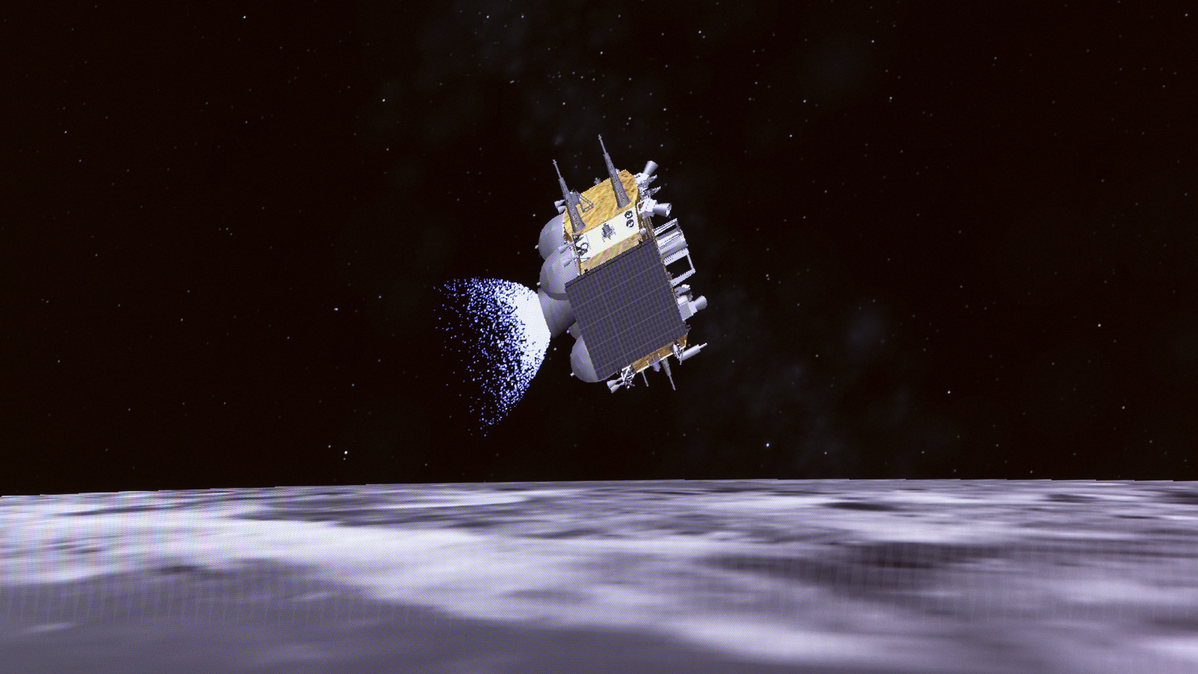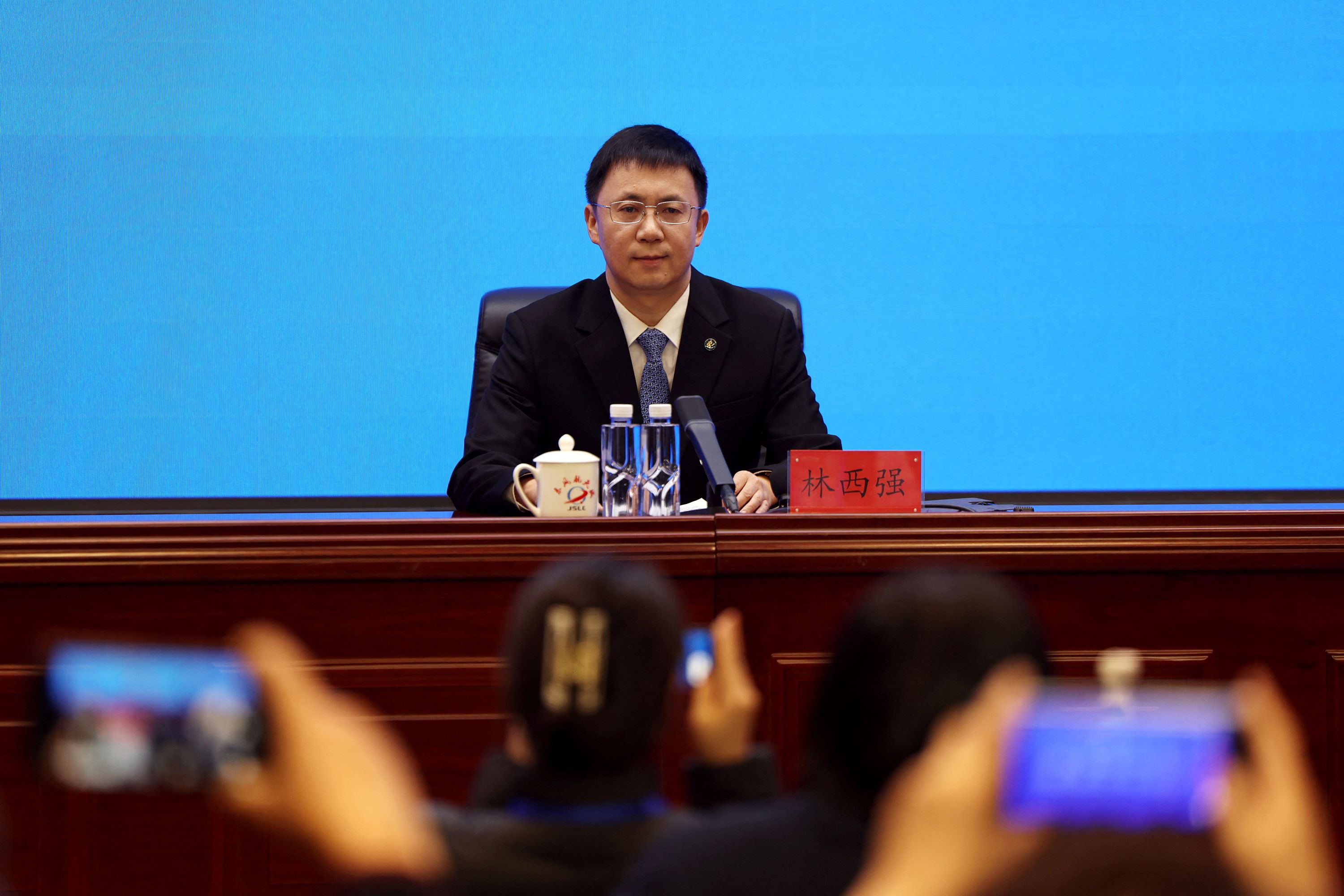
JIUQUAN - China is pressing ahead with its mission to land astronauts on the moon by 2030, moving quickly with development and construction efforts to turn this goal into reality, the China Manned Space Agency (CMSA) announced at a press conference on Tuesday.
Production and ground tests of prototypes of the Long March-10 carrier rocket, the manned spacecraft Mengzhou, the lunar lander Lanyue, the spacesuit to be worn by astronauts and the manned lunar rover are underway as planned, said Lin Xiqiang, spokesperson for the CMSA.
A series of major tests have been completed, including the integrated airdrop test for the spacecraft, the separation test for the two modules of the lander, the test firing of the three-engine power system for the rocket's first stage, and the high-altitude simulation test for the hydrogen-oxygen engine.
READ MORE: China to launch Shenzhou ⅩⅨ crewed spaceship on Oct 30
In addition, the overall plan for pre-launch flight tests as well as the scientific research objectives and payloads for the first manned lunar mission, has been basically finalized, Lin said.
Ground systems including the launch site, telemetry and control communications, and the landing site are being developed and constructed, he added.
According to Lin, the Shanghai Academy of Spaceflight Technology and the China Academy of Space Technology have jointly won the contract for the prototype development of the lunar rover, following a call for proposals.
The lunar rover development team for China's first manned lunar mission will eventually be selected from these two, based on a comparison of the results achieved by their respective prototypes, Lin said, while adding that they will also launch a call for suggestions concerning the rover's name next year.
China has already initiated the lunar landing phase of its manned lunar exploration program -- with a goal to achieve a manned lunar landing by 2030. The plan is to launch two carrier rockets to send a manned spacecraft and a lunar lander, respectively, into lunar orbit. The spacecraft and lunar lander will rendezvous and dock with each other, after which the astronauts will enter the lander.
ALSO READ: China unveils future space science plan
According to Lin, a batch of ten astronauts will be engaged in a training regimen aimed at manned lunar landing missions.
These astronauts are scheduled to acquire skills in maneuvering spacecraft and operating lunar rovers, and will be trained to master techniques for identifying celestial bodies and conducting geological surveys. During their training, they will also be exposed to the unique conditions of space, such as weightlessness in orbit, and the challenges of moving in lunar gravity on the moon's surface.
Last month, the CMSA unveiled the exterior design of a moon-landing spacesuit for the first time. This spacesuit is made of protective materials that can effectively shield astronauts from the lunar thermal environment and lunar dust.

During the press conference, the spokesperson also said that China is engaging in discussions to select and train astronauts from partner nations to participate in its space station missions, and the CMSA welcomes its international counterparts to join in the flight missions of the country's space station.
"Regardless of which country participates, it is humanity's collective quest to unravel the mysteries of the cosmos," said Lin, noting that manned space missions are "the most immediate human endeavor in harnessing the space resources".
Currently, the first batch of payloads selected under cooperation between China and the United Nations Office for Outer Space Affairs are conducting experiments in orbit, said Lin, adding that more international collaborative experimental research initiatives are in the pipeline.
READ MORE: China launches Tianping-3 satellite
China's space station Tiangong boasts a wealth of scientific application resources and comprehensive support capabilities, and the Shenzhou manned system and Tianzhou cargo system can ensure reliable and stable round-trip transportation for personnel and supplies between Earth and the space, said Lin. "It is an excellent platform for international collaboration."
China has conducted international collaborations with the world's major space-faring nations and developing countries, spanning various areas including astronaut selection and training, space science applications, in-orbit facilities, space debris protection and ground support, which have yielded abundant outcomes, Lin said.
China's space station serves not only as a national asset but also as a platform for advancing space technology and bringing benefits to all of humanity, he said.



